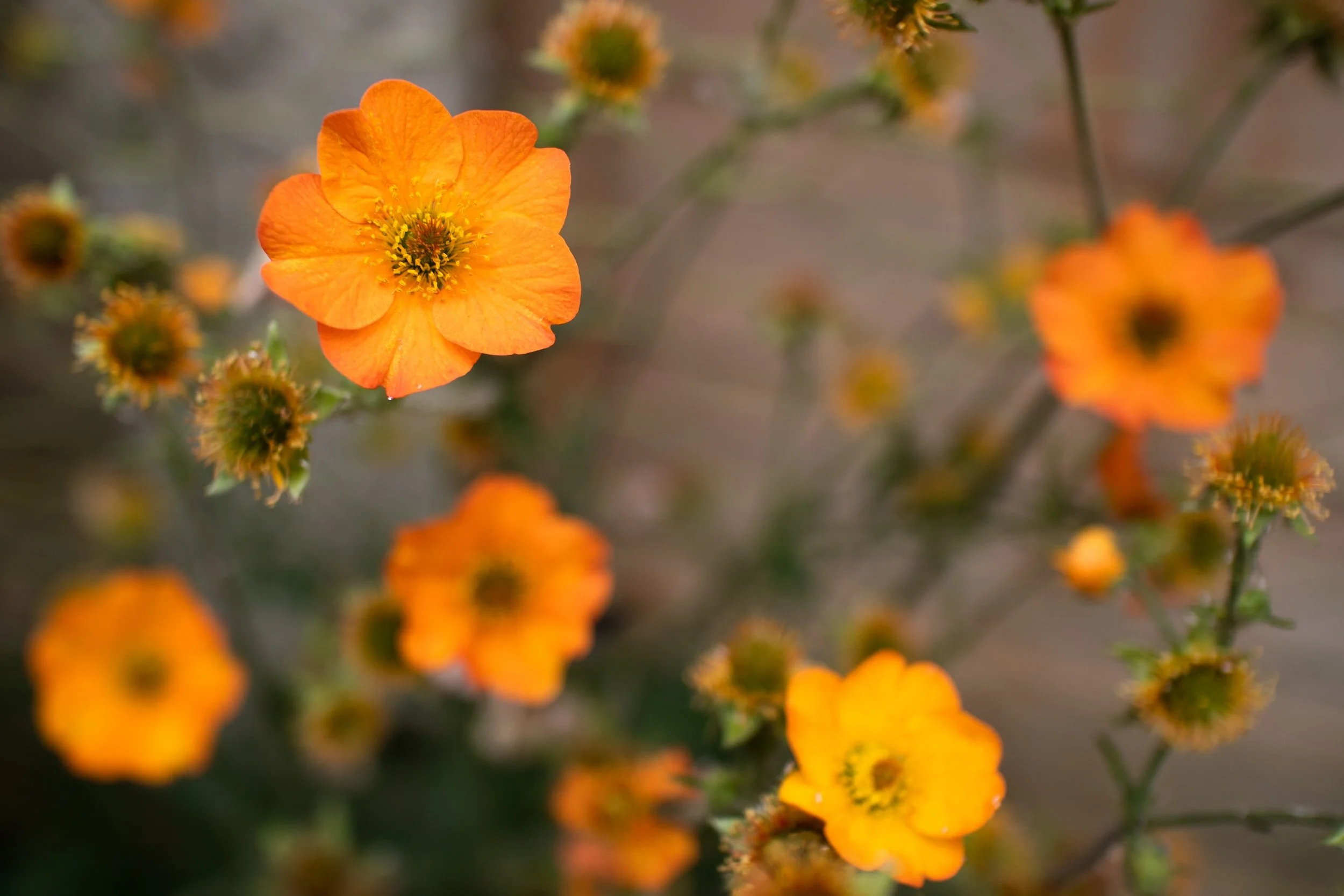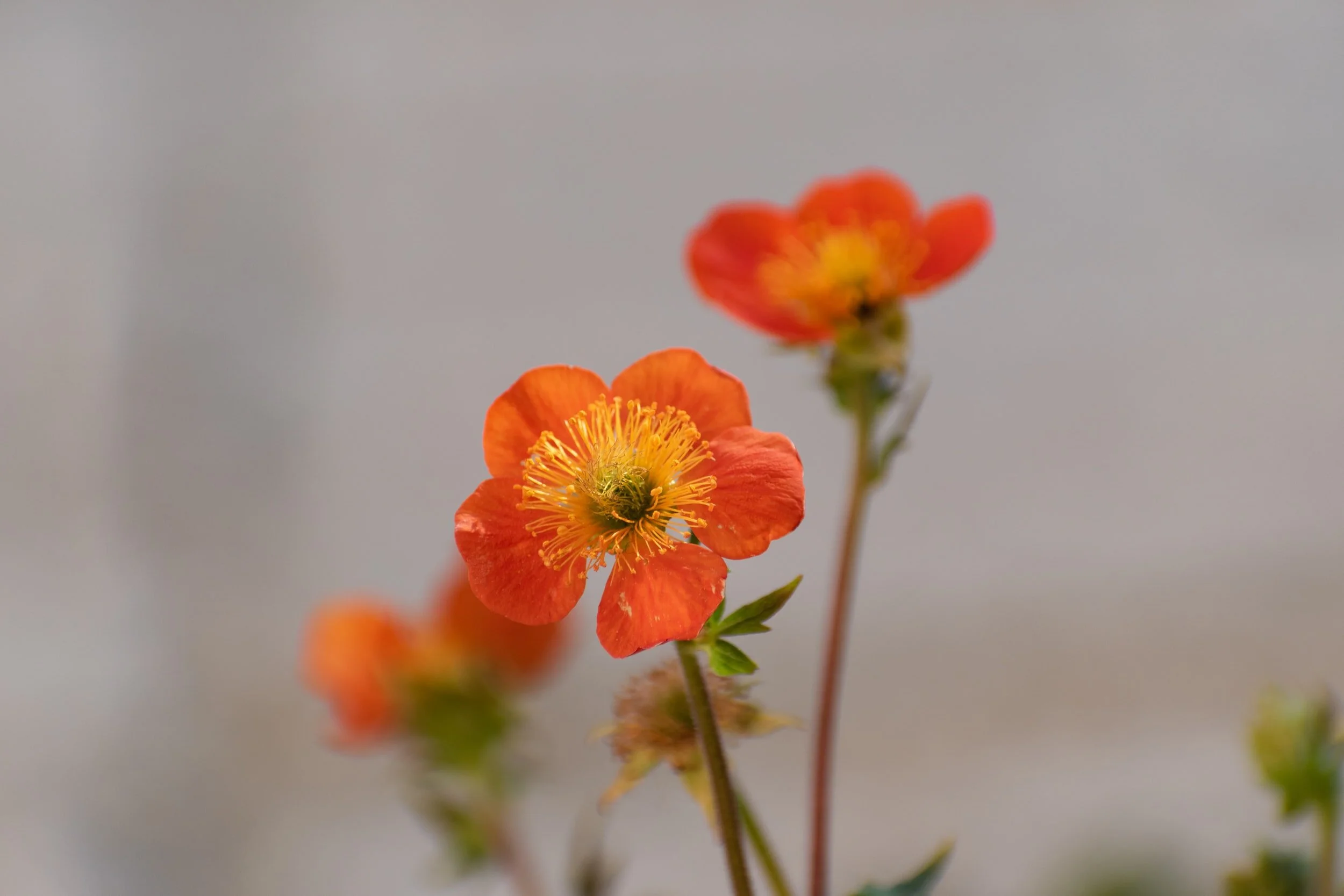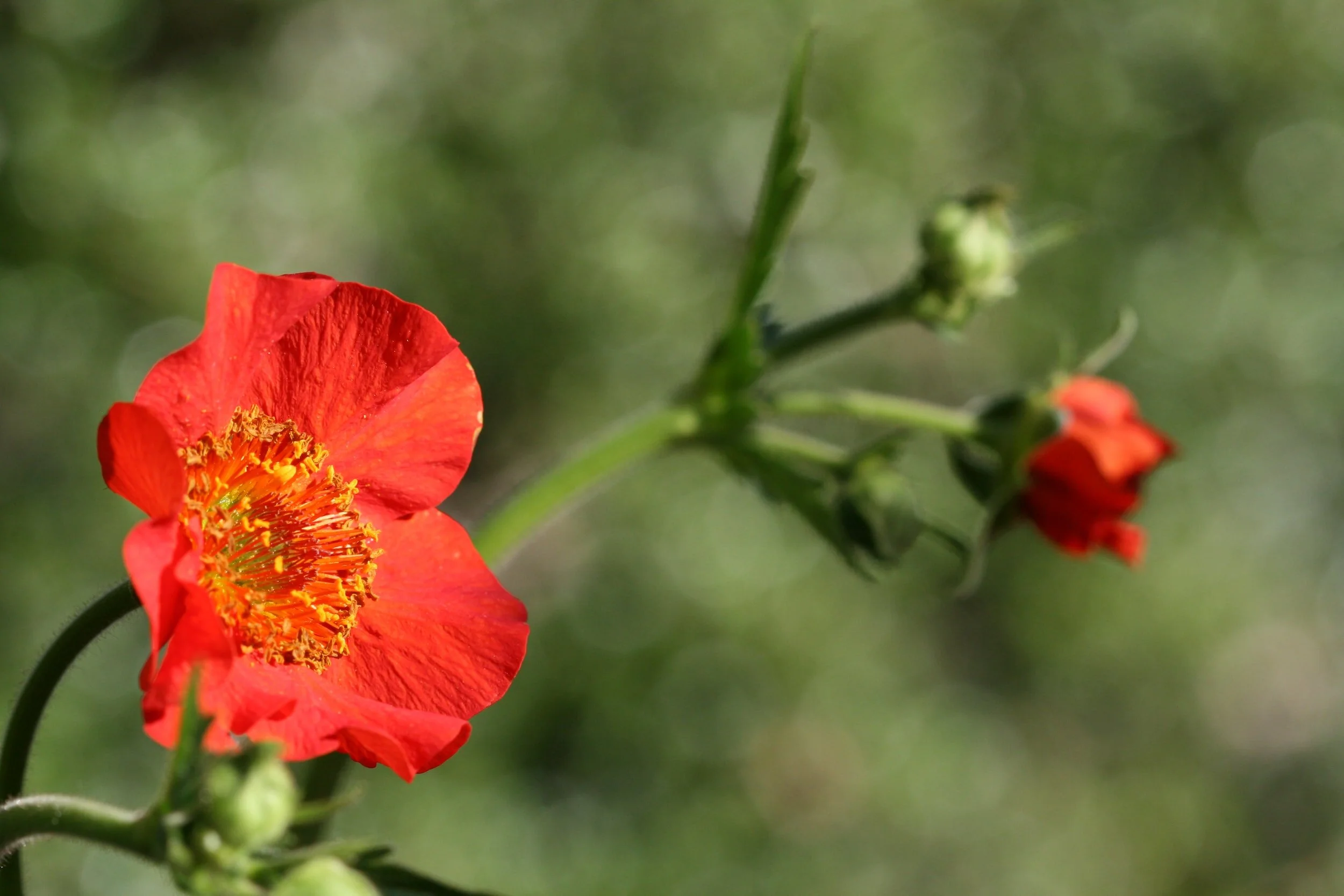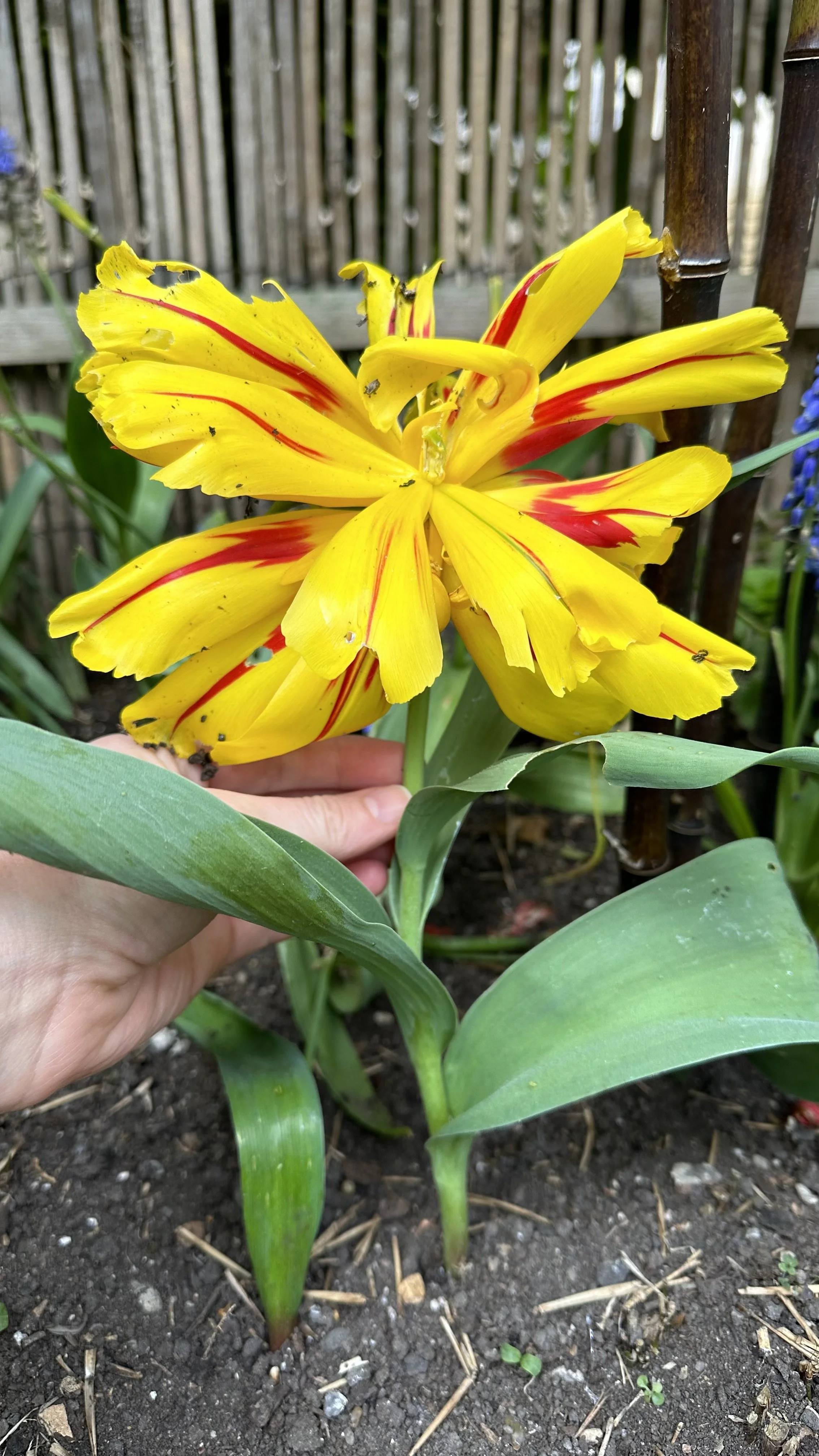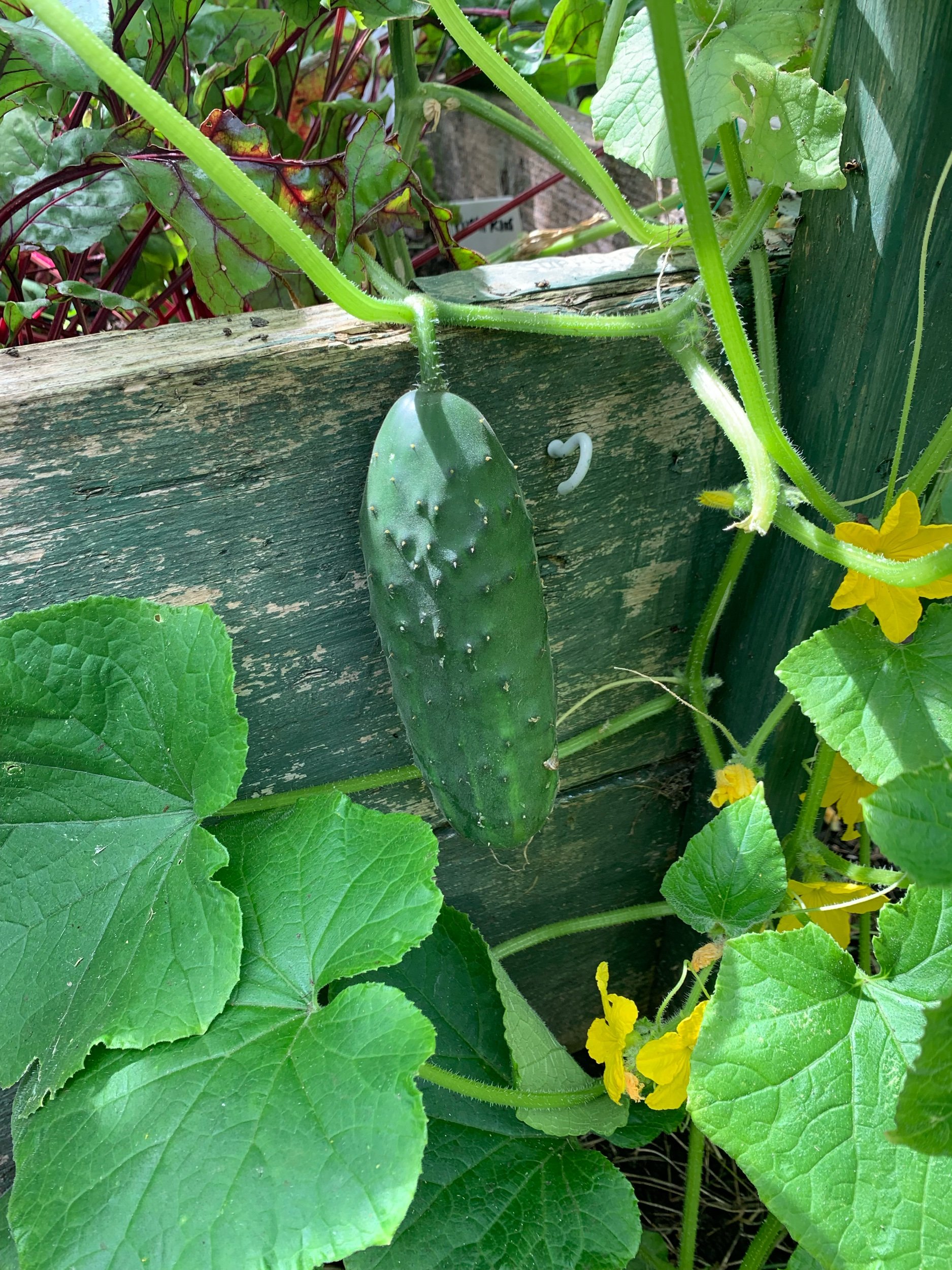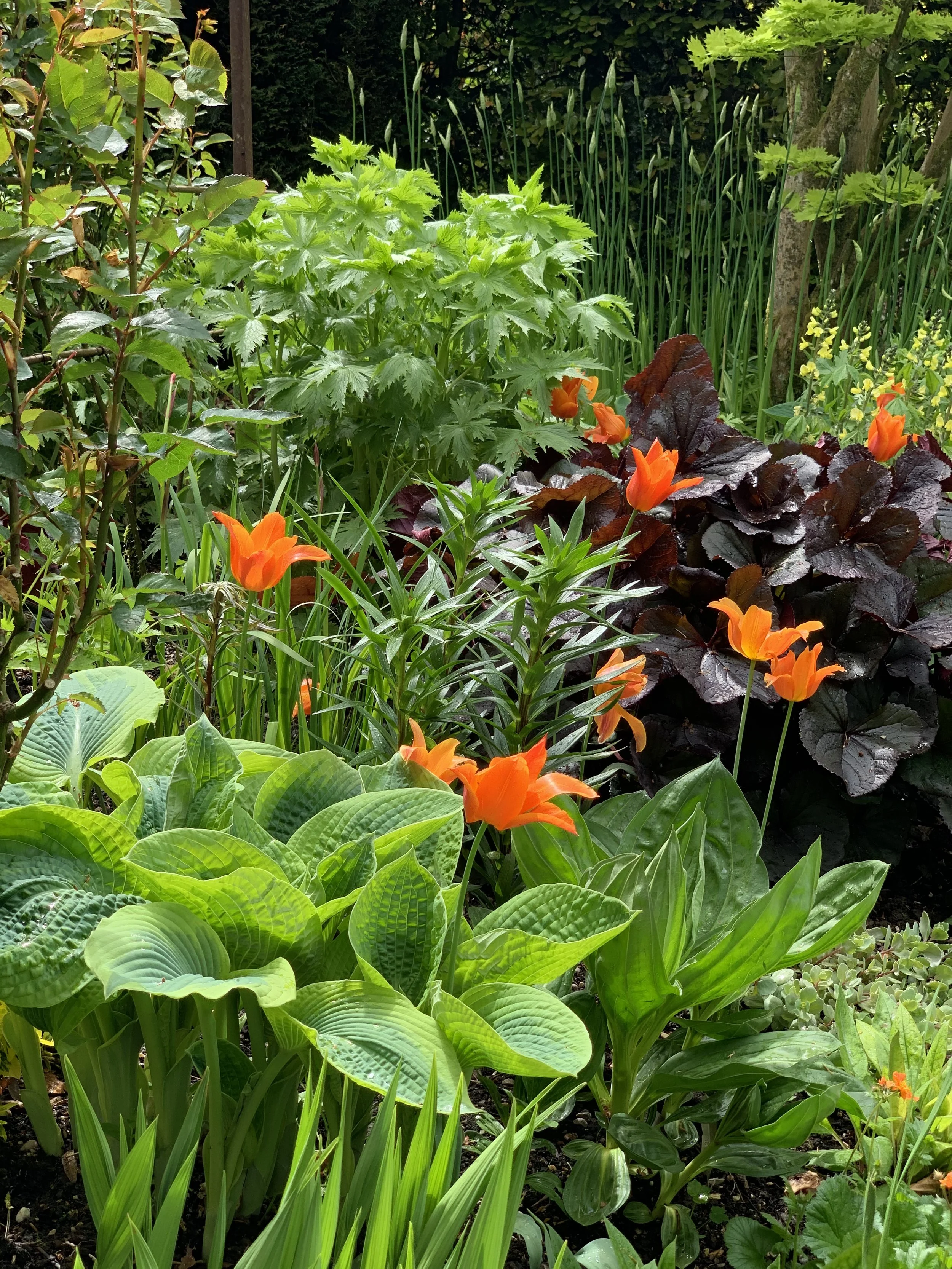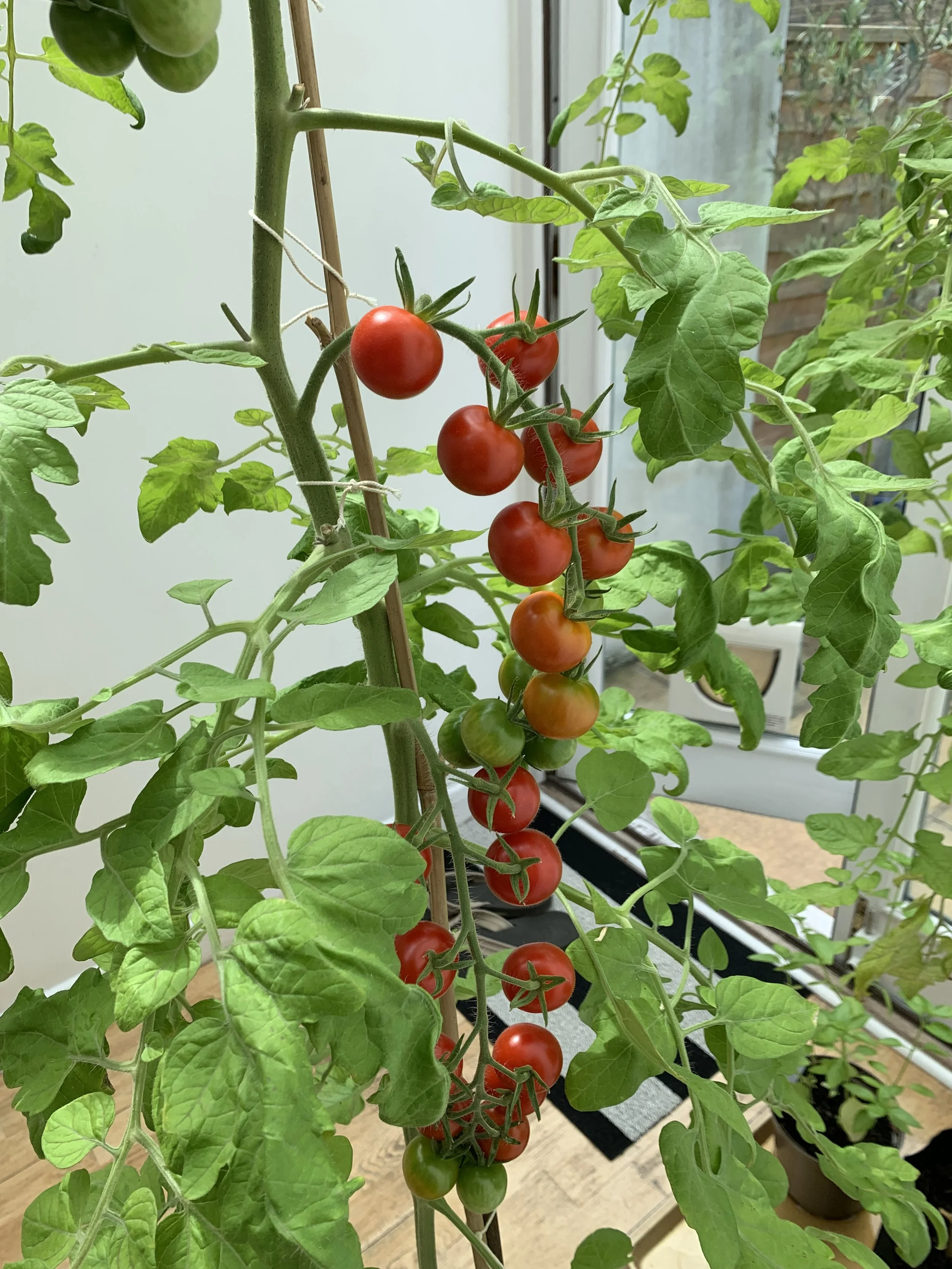Growing Geums: A Complete Guide
This article has links to products that I may make commission from.
Geums, also known as avens, are stunning herbaceous perennial plants that add a burst of color to any garden.
With their vibrant orange, yellow, red, and white flowers, geums are highly sought after by gardeners looking to create a vibrant landscape. I first saw geums at the Chelsea Flower Show last year and since then have added them to my garden.
Here we will explore the characteristics of geums, discuss their preferred growing conditions, and provide essential tips for successful geum cultivation.
Whether you're an experienced gardener or a beginner, geums are an excellent addition to your garden design.
For more flower garden inspiration, check out my guides
Erigeron Karvinskianus: Growing Ground Cover for Pollinators
Are Geums perennial?
Yes, geums are indeed perennials.
As herbaceous perennials, geums have a life cycle that extends beyond two years.
Unlike annual plants that complete their life cycle within a single growing season and biennials that require two growing seasons to complete their life cycle, geums are capable of regrowing from their established root systems year after year.
With proper care and maintenance, geums can continue to thrive and bloom for many years, providing enduring beauty in your garden.
Understanding Geums
The unique combination of shape, petal structure, color, and flowering time contributes to the overall allure of geum flowers.
Their visual appeal, coupled with their ability to attract pollinators, makes geum plants a delightful addition to any garden, adding vibrancy and charm to your outdoor space.
Classification and Family
Geums belong to the Rosaceae family, which includes many familiar plants such as roses and strawberries.
They are herbaceous perennials, meaning they have non-woody stems and can live for multiple years.
Growth Habit
Geums typically have basal rosettes of green leaves that emerge from the ground.
From the center of these rosettes, flowering stems rise, bearing the beautiful blossoms that geums are known for.
The height of geum plants varies depending on the species and cultivar, ranging from compact varieties around 12 inches (30 cm) tall to taller types reaching up to 36 inches (90 cm).
Flower Characteristics
Geums are primarily admired for their showy flowers.
The flowers are usually cup-shaped or saucer-shaped and can be single or double.
Geum flowers come in a wide range of colors, including vibrant oranges, yellows, reds, and whites.
The petals often have interesting textures and can be frilly or ruffled, adding to their visual appeal.
Shape
Geum flowers typically have a cup-shaped or saucer-shaped form.
The petals curve inward, creating a charming and inviting appearance.
The shape of the flowers adds depth and dimension to the overall floral display.
Petal Structure
Geum flowers can have various petal structures, ranging from smooth and simple to frilly and ruffled.
Some geum varieties, especially those with double flowers, exhibit multiple layers of petals, creating a full and intricate look.
The texture and structure of the petals contribute to the visual interest of geum flowers.
Color
Geums offer a wide range of flower colors, making them versatile for different garden design preferences.
The most common colors include shades of orange, yellow, red, and white.
Orange geums, such as "Totally Tangerine," are particularly sought after for their vibrant and eye-catching blooms.
Geum flowers can also have subtle variations within their color range, adding nuance and depth to the overall display.
Flowering Time
Geums bloom in spring and summer, providing a burst of color during the warmer months.
Depending on the variety, the flowering period may vary, but most geum cultivars have a relatively long blooming season, ensuring continuous floral interest in the garden.
Nectar Production
Geum flowers produce nectar, attracting pollinators such as bees and butterflies.
The presence of nectar-rich blooms makes geums not only visually appealing but also beneficial for supporting local pollinator populations and encouraging biodiversity in your garden.
Height and Size
Geum flower stalks vary in height depending on the variety, ranging from shorter types that stay close to the foliage to taller varieties that elevate the flowers for better visibility.
The size of geum flowers can also differ, with some cultivars featuring larger blossoms, while others have smaller, dainty flowers.
Longevity
Geum flowers have a moderate lifespan, typically lasting several weeks.
Deadheading spent blooms can encourage the plant to produce new flowers, prolonging the overall flowering period and maintaining an attractive display.
Geum Varieties and Cultivars
Geums offer a diverse selection of cultivars, each with its unique flower color and form.
When choosing geum varieties and cultivars, consider factors such as flower color, plant height, and blooming season to ensure they complement the overall garden design.
Geum 'Totally Tangerine'
This cultivar is highly popular for its stunning apricot-orange flowers.
'Totally Tangerine' is a vigorous grower with long flowering stems, making it an excellent choice for adding a vibrant splash of color to borders and containers.
It blooms profusely from late spring to early summer and attracts pollinators with its nectar-rich flowers.
Here is the one I recommend:
Geum 'Lady Stratheden'
Known for its large, golden-yellow blossoms, 'Lady Stratheden' is a classic geum cultivar that has been cherished by gardeners for many years.
It features semi-double flowers with ruffled petals, adding texture and visual interest to the plant.
This cultivar blooms in late spring to early summer and makes a striking addition to borders and cottage-style gardens.
Here is the one I recommend:
Geum 'Mai Tai'
'Mai Tai' is a captivating geum cultivar that displays delicate peachy-pink and yellow flowers.
The semi-double to double flowers have a unique coloration, with the petals transitioning from soft pastel hues to deeper shades at the center.
It blooms from late spring through summer and complements other pastel-colored flowers beautifully in borders and mixed plantings.
Geum 'Alabama Slammer'
This cultivar is known for its vibrant red and yellow double flowers, which create a striking contrast.
'Alabama Slammer' adds a bold and dramatic touch to the garden, and its long flowering period extends from spring to summer.
It is a great choice for adding intense color to borders, rock gardens, or as a focal point in container plantings.
Geum rivale (Water Avens)
Geum rivale is a species of geum that is native to wet habitats.
It features nodding, bell-shaped pink or purple flowers, adding an elegant touch to damp areas in the garden. Its unique flower shape and color make it a standout choice for naturalistic or woodland gardens.
Geum rivale is an excellent option for those looking to create a more diverse and ecologically friendly landscape.
These are just a few examples of geum varieties and cultivars available.
Other notable cultivars include 'Geum 'Borisii' with its bright yellow flowers, 'Geum 'Cooky' with fiery orange-red blooms, and 'Geum 'White Lady' with pure white flowers.
Each cultivar offers its own distinct beauty, allowing gardeners to select geums that suit their preferences and design needs.
Here is where to buy my favorite Geum ‘Mrs. Bradshaw’:
Ideal geum Growing Conditions
Sunlight
Geums prefer a location that receives full sun to partial shade.
They perform best when exposed to at least six hours of direct sunlight per day.
In regions with hot summers, providing some afternoon shade can help protect the plants from scorching.
Soil
Geums prefer well-drained soil that is rich in organic matter.
They can tolerate a range of soil types, including loam, clay, and sandy soil, as long as it drains well and doesn't become waterlogged.
Adding compost or well-rotted organic matter to the soil before planting can improve its drainage and moisture-retaining capacity.
Here is my recommended organic potting mix:
Moisture
Geums prefer soil that is moist (never dry soil) but not waterlogged.
They thrive in slightly moist, well drained soil or moisture retentive conditions.
Regular watering during dry periods is essential, especially when geums are establishing their roots or during prolonged droughts. However, it's important to avoid overwatering, as excessive moisture can lead to root rot and other issues.
For more watering tips, check out my guide How to Use Watering Globes.
Hardiness Zones
Geums are generally hardy in USDA hardiness zones 4 to 9, although specific cultivars may have different hardiness requirements.
Before selecting geums for your garden, check the hardiness zone recommendations for the specific cultivar you're interested in.
This ensures that the geums you choose can withstand the winter temperatures in your region.
Temperature and Climate
Geums can tolerate a wide range of temperatures, but they generally prefer cool to moderate climates.
They can withstand mild frost but may require some protection in colder regions during severe winters.
Geums are adaptable and can thrive in various climates, including coastal regions and mountainous areas.
Watering and Drought Tolerance
While geums prefer moisture-retentive soil, they can also tolerate dry conditions once established.
However, prolonged periods of drought without supplemental watering may stress the plants and affect their overall health and blooming potential.
It's best to provide regular water during dry spells to ensure optimal growth and flowering.
Microclimates
Geums can benefit from microclimates in the garden.
Placing them in areas protected from strong winds can help prevent damage to their delicate flower stalks and foliage.
Additionally, microclimates created by nearby structures or taller plants can provide partial shade, which is beneficial in regions with hot summers.
By providing the ideal growing conditions of full sun to partial shade, well-drained soil, appropriate moisture levels, and considering their hardiness zone and climate preferences, you can create an optimal environment for geums to thrive.
These conditions will contribute to healthy growth, abundant flowering, and long-lasting beauty in your geum plants.
How to Plant Geums
Timing
Geums are typically planted in spring or early fall, when the soil is workable and temperatures are moderate.
Spring planting allows the plants to establish their root systems before the heat of summer, while fall planting gives them a head start for the following year's growth.
Site Selection
Choose a planting site that provides the ideal growing conditions for geums, including full sun to partial shade and well-drained soil.
Avoid areas with standing water or heavy clay soil that retains moisture for extended periods.
Soil Preparation
Prepare the planting area by loosening the soil and removing any weeds or debris.
Amend the soil with organic matter such as compost or well-rotted manure to improve drainage and add nutrients.
Geums prefer slightly acidic to neutral soil with a pH range of 6.0 to 7.0.
Planting Hole
Dig a hole slightly larger than the root ball of the geum plant.
The depth of the hole should be such that the crown of the plant (where the stems meet the roots) is level with or slightly above the soil surface.
This helps prevent the crown from rotting.
Planting
Gently remove the geum plant from its container, taking care not to damage the roots.
Place the plant in the center of the hole, ensuring that it is positioned upright.
Backfill the hole with soil, gently firming it around the roots to eliminate air pockets. Water the plant thoroughly after planting to settle the soil.
Spacing
Space geum plants according to their mature size.
Generally, space them 12 to 18 inches (30 to 45 cm) apart to allow for adequate air circulation and growth.
Proper spacing prevents overcrowding and helps the plants receive sufficient sunlight and nutrients.
Watering
After planting, provide regular watering to help the geum plants establish their root systems.
For this you can use rainwater collected from a water butt.
Keep the soil slightly moist but not waterlogged. Water deeply and thoroughly, allowing the water to penetrate the root zone.
As the plants become established, reduce watering frequency but ensure they receive sufficient moisture during dry periods.
Mulching
Apply a layer of organic mulch, such as wood chips or straw, around the base of the geum plants.
Mulch helps conserve soil moisture, suppress weeds, and regulate soil temperature.
Keep the mulch a few inches away from the plant stems to prevent crown rot.
Check out my guide: The Best Alternatives to Traditional Mulch for Your Garden.
Support
Some taller geum varieties may require support to prevent their flower stalks from bending or breaking.
Inserting plant stakes or installing a small plant cage around the plants can provide the necessary support and keep them upright.
Here are the plant support stakes I recommend:
Care and Maintenance for Geums
Geums are relatively low-maintenance plants, but they still require some care to thrive.
Watering
Geums prefer moisture-retentive soil, especially during the growing season.
Ensure the soil remains evenly moist but not waterlogged. During dry periods, regular watering is crucial to prevent drought stress.
Fertilization
Apply a balanced slow-release fertilizer like this one in early spring to provide essential nutrients to the plants.
Here is the fertilizer I recommend:
Pruning
Geums generally do not require extensive pruning.
Deadheading spent flowers promotes continuous blooming and prevents self-seeding.
In late winter or early spring, trim back any damaged or dead foliage to encourage new growth.
Winter Care
Geums are generally hardy plants, but some varieties may benefit from a layer of mulch to protect their roots during colder months.
Consult the specific requirements for your geum variety and hardiness zone.
Propagation
Geums can be propagated through division or by growing from seed.
To propagate through division, carefully dig up the plant in early spring or fall, ensuring each division has healthy roots. Replant the divisions in prepared soil, water thoroughly, and provide appropriate care.
Growing geums from seed requires patience, as they can take up to three years to reach maturity and produce flowers.
Design Ideas
Geums can be used effectively in various garden designs, including rock gardens, borders, and containers. Their compact size and colorful flowers make them versatile for mixing with other perennials or creating vibrant focal points.
Consider combining geums with plants that have contrasting foliage or flowers to create visually appealing combinations.
In conclusion, geums are captivating herbaceous perennials that bring a burst of color and elegance to any garden. With their vibrant orange, yellow, red, or white flowers, geums add a touch of brilliance and charm to borders, rock gardens, and containers.
As a plant type, geums offer a diverse range of cultivars, each with its own unique characteristics and beauty. Whether you're a seasoned gardener or just starting out, geums are a wonderful addition to your gardening repertoire.
With the right care and attention to their preferred growing conditions, these resilient plants will reward you with their stunning blooms year after year. So, embark on your geum gardening journey and let these enchanting perennials transform your garden into a vibrant tapestry of color and life.
Looking for more garden inspiration? Check out my other flower garden guides:

